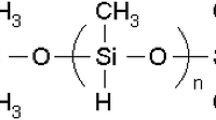Abstract
Measurement of tear strength of polyphosphazene (PNF), polychloroprene (CR) and styrenebutadiene rubber (SBR) has been carried out over a wide range of rates, temperatures and crosslinking. Data on strength of PNF have been found to be superimposable on a single master curve with the help of the WLF shift factor, indicating that enhancement of strength at high rates or low temperatures arises from simple viscoelastic loss mechanisms. The master curve may be termed as tearing energy spectra for a particular crosslinking density. Master curves at different elastic modulii are not superimposable. Strength of PNF is also much lower than that of SBR at a similar degree of crosslinking. This shows that mass per chain atom, which was important for predicting threshold strength is equally important under non-equilibrium conditions. Tearing energy spectra of filled SBR has also been obtained with the help of restricted tearing tests. Strength values obtained at various temperatures and rates for CR are, however, not superimposable on a master curve even with the help of special tests such as: (a) by partial swelling, (b) by doubling the curing agents, or (c) by peeling two layers apart. This anomaly is attributed to strain-induced crystallization of neoprene rubber on a molecular level.
Similar content being viewed by others
References
R. S. Rivlin andA. G. Thomas,J. Polym. Sci. 10 (1953) 291.
E. H. Andrews,J. Mater. Sci. 9 (1974) 887
A. Kadir andA. G. Thomas,Rubber Chem. Technol. 54 (1981) 15.
A. Ahagon andA. N. Gent,J. Polym. Sci., Polym. Phys. Ed. 13 (1975) 1903.
A. K. Bhowmick andA. N. Gent,Rubber Chem. Technol. 56 (1983) 845.
D. J. Plazek, I. C. Choy, F. N. Kelley, E. Von Meerwall, andL. J. Su,ibid. 56 (1983) 866.
J. A. C. Harwood, A. R. Payne andR. E. Whittaker,J. Appl. Polym. Sci. 14 (1970) 2183.
A. N. Gent andR. H. Tobias,J. Polym. Sci. Polym. Phys. Ed. 20 (1982) 2051.
A. K. Bhowmick, A. N. Gent andC. T. R. Pulford,Rubber Chem. Technol. 56 (1983) 226.
J. D. Ferry, in “Viscoelastic Properties of Polymers”, 2nd Edn. (Wiley, New York, 1970).
G. J. Lake andA. G. Thomas,Proc. R. Soc. A300 (1967) 108.
H. W. Greensmith andA. G. Thomas,J. Polym. Sci. 18 (1955) 189.
H. W. Greensmith,ibid. 21 (1956) 175.
P. K. Pal, A. K. Bhowmick andS. K. De,Int. J. Polym. Mater. 9 (1982) 132.
Author information
Authors and Affiliations
Rights and permissions
About this article
Cite this article
Bhowmick, A.K. Tear strength of elastomers over a range of rates, temperatures and crosslinking: tearing energy spectra. J Mater Sci 21, 3927–3932 (1986). https://doi.org/10.1007/BF02431631
Received:
Accepted:
Issue Date:
DOI: https://doi.org/10.1007/BF02431631



